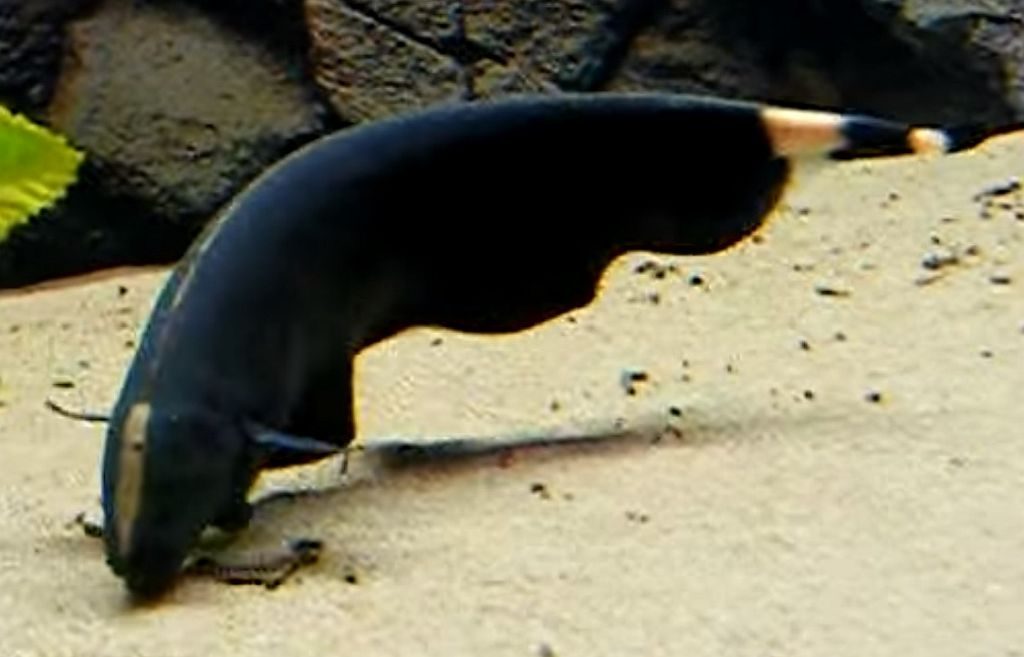Knifefish are a shy, secretive species that are found throughout Southeast Asia, Africa, Central America, and South America. Although many tropical fish keeping enthusiasts find several of these species somewhat challenging to keep, they have also become one of the most sought after “oddball” species in the aquarium trade.
Freshwater knifefish species are generally grouped into two categories of neotropicals; the Gymnotiformes order which contains six families of weakly electric knifefish found in Central and South America, and the Osteoglossiformes order of featherbacks found in Southeast Asia and Africa.
The six families of weakly electric knifefish found in Central and South America are:
The banded knifefishes and electric eels (family Gymnotidae)
The sand knifefishes (family Rhamphichthyidae)
The bluntnose knifefishes (family Hypopomidae)
The rat tail and glass knifefishes (family Sternopygidae)
The ghost knifefishes (family Apteronotidae)
The aba (family Gymnarchus niloticus)
Weakly electric knifefish from Central and South America all have either flattened or rounded eel like bodies with no dorsal fin, a greatly reduced or nonexistent caudal fin, and an extremely long anal fin that begins near the pectoral fin area of the fish. The long anal fin allows the knifefish to quickly move forward or backwards in an undulating fashion almost effortlessly with surprising bursts of speed.
Knifefish also possess an organ that allows them to generate a weak electric field around them that is believed to be used for navigation, spatial orientation, detecting food, and communicating with others of their own kind.
Male knifefish use the electric field to communicate with and court females during their mating rituals.
Depending on the species, some knifefish live along the banks of rivers where they sometimes burrow into the substrate, or on the flood plains among the leaves, roots, and plant matter, while others live in the the main channels of rivers, some in the quieter lakes, and some in lagoons.
All species are largely nocturnal predators that become extremely active at night when they can be found searching for small fish, insects, and crustaceans with their mild electrical field.
The featherbacks from Southeast Asia and Africa in the family Notopteridae all have long continuous fins along their undersides that join with the caudal and anal fin. They have either no dorsal fins or if one exists, very small dorsals.
Unlike their Central and South American cousins, these knifefish can grow to quite a large size. In their natural habitats they range in size from 8 inches in length, to well over 5 feet in length which makes a number of this species unsuitable for tropical fish keeping enthusiasts.
Knifefish are best housed in as large a tank as possible for the size of the species being kept. Because they are shy and secretive, they should be provided with a lot of hiding places. Rocks formed into caves, hollow logs, dense foliage, lots of driftwood roots or bogwood, and some floating plants
to diffuse overhead lighting is necessary to keep them healthy and happy.
Although some tropical fish keeping enthusiasts keep knifefish with similarly sized tank mates, they are highly territorial and do best when kept alone in a single species biotope setting. They can be peaceful with equally sized tank mates, but because they are aggressive eaters, smaller fish will eventually wind up on their menu. Knifefish are also good jumpers, so a tightly fitting tank cover or a thick mat of floating plants is necessary to keep them from leaving their aquarium.
Knifefish are carnivores that in their natural habitat feed on small fish, worms, small crustaceans, shrimp, and a variety of insects. In an aquarium environment they can be fed live or frozen bloodworms, earthworms, tubifex, blackworms, mysis shrimp
, ghost shrimp
, bits of shrimp, etc. and because of their nocturnal nature, they should be fed just after you turn off the lights in your aquarium at night. To help ensure good water quality that these fish require, make sure that any uneaten foods are removed from the aquarium the next morning.
The most common knifefish like the Clown Knifefish and Black Ghost Knifefish are readily available from specialty tropical fish keeping shops or from online suppliers. The more uncommon and exotic specimens like the Royal Knifefish can be acquired directly from importers, online forums, online auction sites, etc.
Most knifefish are relatively long lived with an average lifespan of 3 to 8 years, but several species have been known to live in an aquarium environment well over 10 years.





